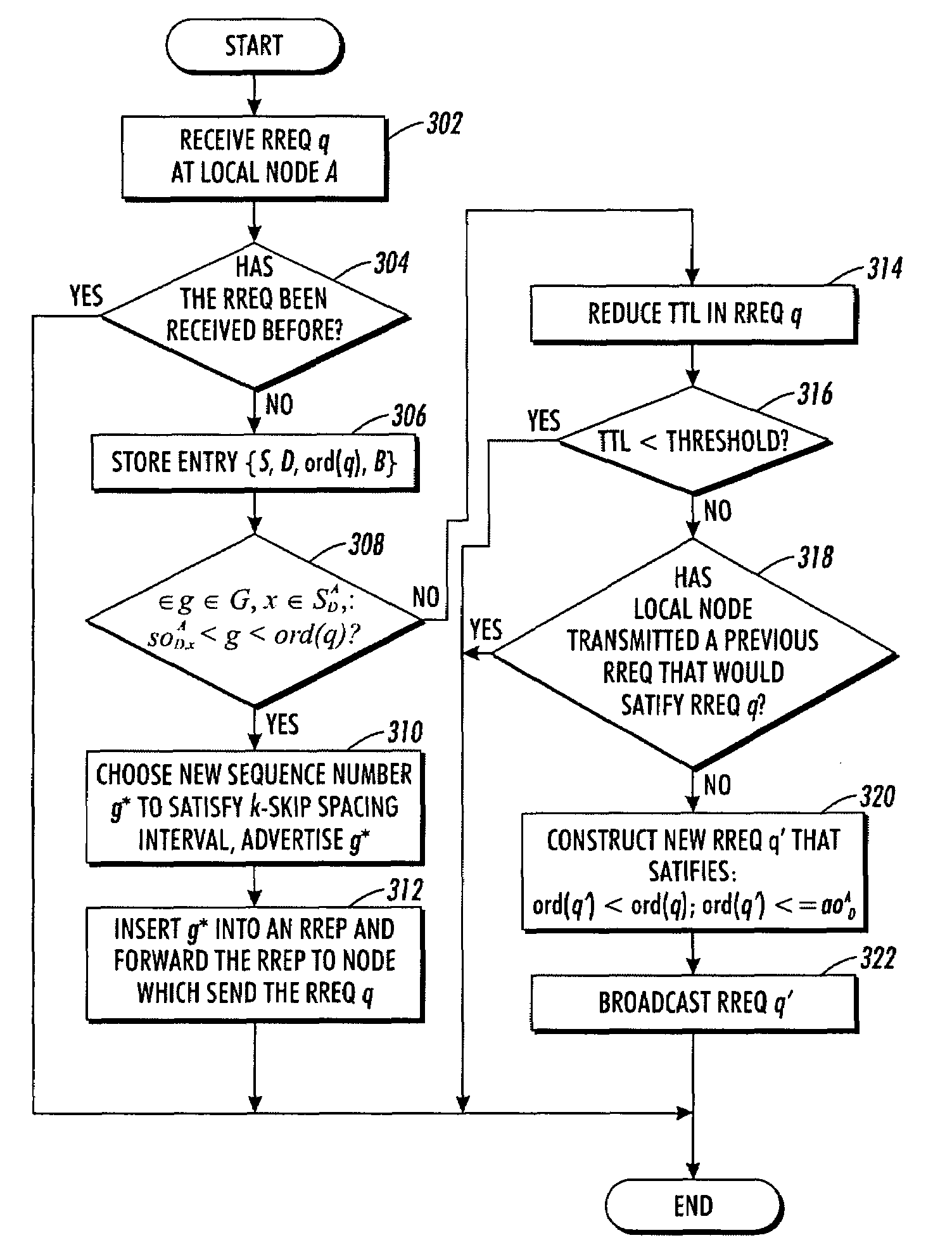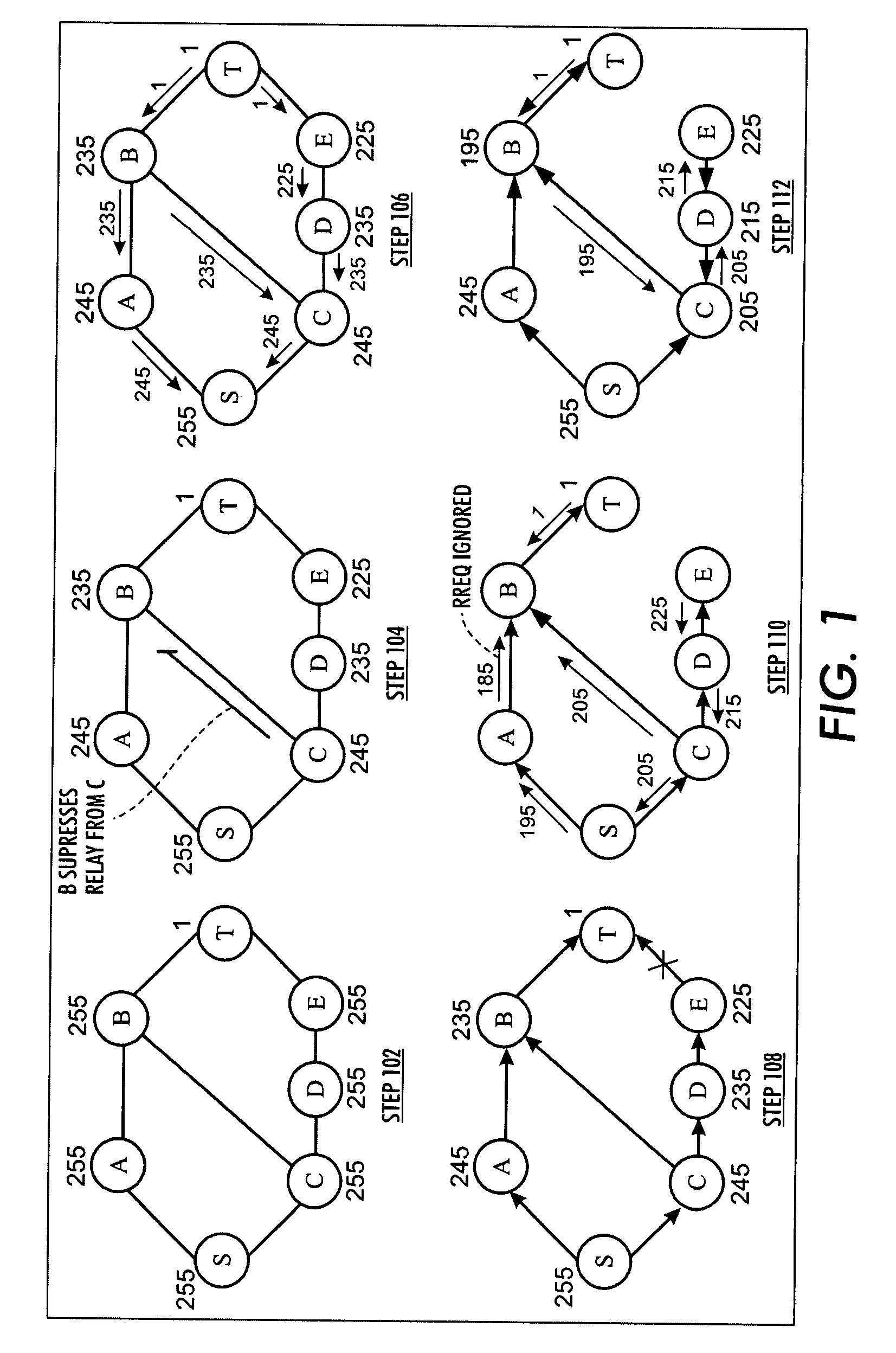Method and system for loop-free ad-hoc routing
a loop-free, ad-hoc technology, applied in the field of wireless network design, can solve the problems of difficult to discover and maintain loop-free and stable routes in wireless ad-hoc networks, difficult to achieve loop-free ad-hoc routing, etc., and achieve the effect of facilitating loop-free ad-hoc routing
- Summary
- Abstract
- Description
- Claims
- Application Information
AI Technical Summary
Benefits of technology
Problems solved by technology
Method used
Image
Examples
examples
[0071]FIG. 1 illustrates a loop-free path discovery process and a path recovery process in accordance with an embodiment of the present invention. In this example, the system is assumed to employ an 8-bit sequence number and a k-skip spacing interval of 10. Steps 102-106 illustrate an exemplary path discovery process. In step 102, an ad-hoc network is in its initial state, where a source node S seeks a path to a destination node T. Initially, every node sets its advertised label for destination T to be 255, the maximum value. Node T, being the destination, sets its label to “1.”
[0072]In step 104, node S initiates an RREQ for node T with a requested ordering of 255. Nodes A and C, not having a valid route, relay the request with a new requested ordering of 245. In this example, node B processes node A's copy of the RREQ before node C's copy. Node B relays the request from node A and also caches C as an RREQ predecessor with requested ordering of 245. After receiving the RREQs, node T...
PUM
 Login to View More
Login to View More Abstract
Description
Claims
Application Information
 Login to View More
Login to View More - R&D
- Intellectual Property
- Life Sciences
- Materials
- Tech Scout
- Unparalleled Data Quality
- Higher Quality Content
- 60% Fewer Hallucinations
Browse by: Latest US Patents, China's latest patents, Technical Efficacy Thesaurus, Application Domain, Technology Topic, Popular Technical Reports.
© 2025 PatSnap. All rights reserved.Legal|Privacy policy|Modern Slavery Act Transparency Statement|Sitemap|About US| Contact US: help@patsnap.com



